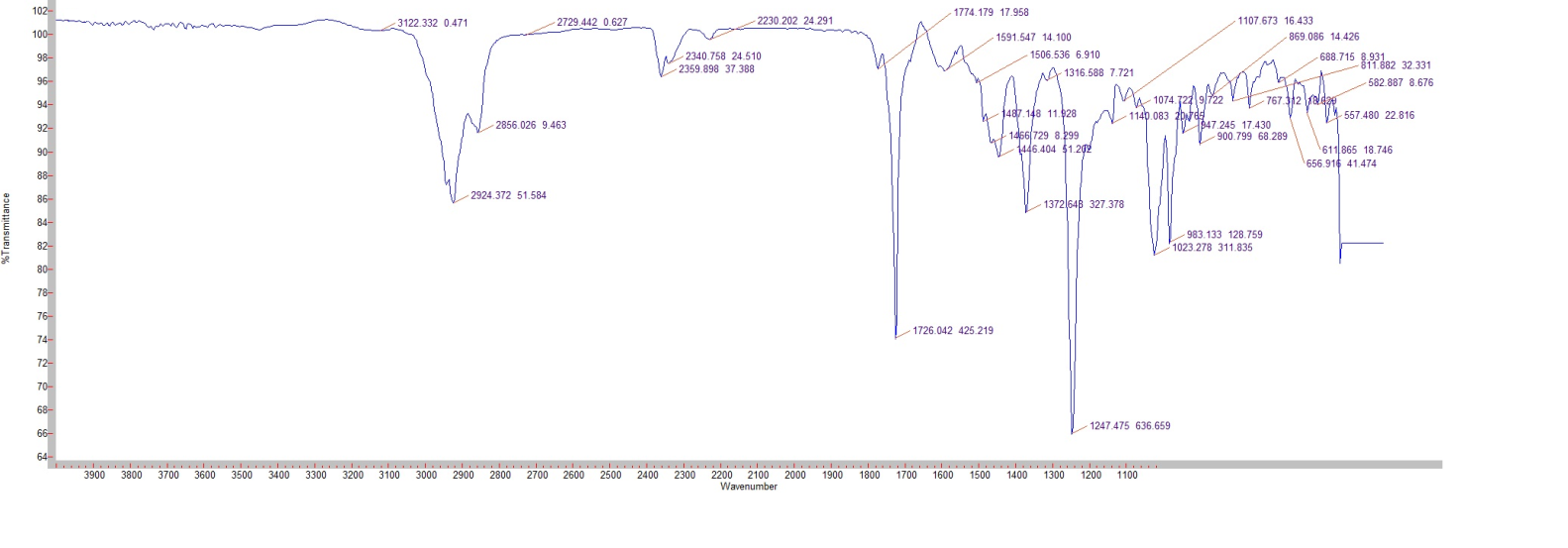SYNTHESIS OF BETULIN DIFORMATE AND ALLOBETULIN FORMATE DIRECTLY FROM OUTER BIRCH BARK
Аннотация
One of the promising directions of birch bark utilization is its extractive treatment with obtaining a number of valuable chemical components among which the most relevant is betulin. As a rule, the methods of betulin esters are multistage and based on classical reactions of betulin acylation; betulin should be preliminarily extracted from birch bark.
The purpose of the present research was synthesis of the betulin diformate and allobetulin formate directly from the birch bark without a separate stage of the betulin preparation. The external layer of the bark of birch, Betula pendula Roth was ground to particle size of 10–20 mm and used as the raw material. The method is based on combined extraction of betulin from outer birch bark and its formylation with formic acid at reflux for 16 hours. During the treatment of birch bark with formic acid, along with betulin extraction into solution, its formylation into betulin diformate and allobetulin formate occurs. The yield of the formation of betulin diformate and allobetulin formate of the mass of acylated upper bark (a.u.b.) was 40 and 10%, respectively. The first fraction of betulin diformate was obtained from the resulted solution by evaporating 3/4 of the solution and poured it in water to form beige precipitate, whereas the second fraction was extracted by treating the resulted birch bark by acetone followed by evaporation. However, the allobetulin formate was formed from the second treatment of resulted birch bark by chloroforrm followed by evaporation. Betulin diformate was found to be the main component of this extraction, and it was recrystallized from ethyl alcohol to afford beige powder, and its melting point is 165 °C. The structures of betulin diformate and allobetulin formate are confirmed by 1H NMR, 13C NMR, and FTIR spectroscopy.
Скачивания
Metrics
Литература
Hagiwara H., Morohashi K., Sakai H., Suzuki T., Ando M. Tetrahedron,1998,vol. 54,pp. 5845. DOI: 10.1016/S0040-4020(98)00255-5.
Shirini F., Zolfigol M. A., Mallakpour S. Russ. J. Org. Chem., 2005,vol. 41,pp. 625. DOI:10.1007/s11178-005-0217-8.
Shirini F., Zolfigol M. A., Abedini M., Salehi P. Bull.Korean. Chem. Soc., 2003, vol. 24,pp. 1683. DOI: 10.5012/bkcs.2003.24.11.1683.
Lee C. W., Hwang H. Y., Jeong H. M., Yoon U. C., Chi K. W. Synth Met., 2009,vol. 159, pp. 1820. DOI: 10.1016/j.synthmet.2009.05.033.
Greene T.W., Wuts P.G.M. Protective Groups in Organic Synthesis. New York ; Wiley, 1999.
Rignold H.J., Loeken B., Roseknranz G., Sondheimer F.J. Am. Chem. Soc., 1956, vol. 78, pp. 816.DOI: 10.1021/ja01585a030.
Mandai T., Matsumoto T., Kawada M., Tsuji J. J. Org. Chem., 1992, vol. 57, pp. 1326.DOI:10.1021/jo00031a005.
Garner C.M., Prince M.E.Tetrahedron. Lett., 1994, vol. 35, pp. 2463. DOI: 10.1016/S0040-40399(00)77144-9.
Ali B.E., Alper H. J. Mol. Catal. A., 1995, vol. 96, pp. 197. DOI: 10.1016/1381-1169(94)00048-4.
Melzig M.F., Bormann H. Planta. Med., 1998, vol. 64, pp. 655.DOI:10.1055/s-2006-957542.
Schmidt M.L., Kuzmanoff K.L., Ling-Indeck L.,Pezzuto J.M. Eur. J. Cancer., 1997, vol. 33, pp. 2007. DOI: 10.1016/S0959-8049(97)00294-3.
Kim D.S.H.L., Pezzuto J.M., Pisha E. Bioorg. Med. Chem. Lett.,1998, vol. 8, pp. 1707. DOI: 10.1016/S0960-894X(98)00295-9.
Lee K.H.Curr. Topics Med. Chem. (Hilversum, Neth.), 2003, vol.3, pp. 155.DOI: 10.2174/1568026033392435.
Hiroya K., Takahashi T., Miura N., Naganuma A., Sakamoto T. J. Bioorg. Med. Chem., 2002, vol. 10, pp. 3229.DOI:10.1016/S0968-0896(02)00172-4.
Kim J.Y., Koo H.M., Kim D.S.H.L.Bioorg.Med. Chem. Lett.,2001, vol. 11, pp. 2405.DOI:10.1016/S0960-894X(01)00460-7.
Flekhter O.B., Boreko E.I., Nigmatullina L.R., Pavlova N.I., Nikolaeva S.N., Savinova O.V., Eremin V.F., Baltina L.A., Galin F.Z., Tolstikov G.A. Bioorg. Khim.,2003, vol.29, pp. 326.DOI: 10.1023/A:1023948919315.
Lee K.H.J. Nat. Prod., 2004, vol.67, pp. 273.DOI: 10.1021/np030373o.
Cos P., Berghe D.V., Hermans N., Pieters L., Vlietinck A. J. Nat. Prod.,2004, vol. 67, pp. 284.DOI: 10.1021/np034016p.
Tolstikov G.A., Flekhter O.B., Shults E.E., Baltina L.A., Tolstikov A.G. Khim. InteresakhUstoich. Razvit., 2005, vol. 13, pp. 1. (in Russ.).
Patocka J.J. Appl. Biomed.,2003, vol. 1, pp. 7.
Sami A., Taru M., Salme K., Jari Y.K. Eur. J. Pharm. Sci., 2006, vol. 29, pp. 1. DOI:10.1016/j.ejps.2006.04.006.
Strazzolini P., Giumanian A.G., Causi S. Tetrahedron, 1990, vol. 46, pp. 1081. DOI: 10.1016/S0040-4020(01)86676-X.
Olah G.A., Vankar Y.D., Arvanaghi M., Sommer M.J.Angew. Chem, Int Ed., 1979, vol. 18, pp. 614.DOI: 10.1002/anie.197906141.
Kitagawa T., Arita J., Nagahata A.Chem Pharm Bull., 1994, vol. 42, pp. 1655. DOI: 10.1248/cpb.42.1655.
Schulze H.,Pieroh K. Chem. Ber.,1922, vol. 55, pp. 2332–2346. DOI: 10.1002/cber.19220550814.
Lugemwa F.N., Huang F.Y., Bentley M.D., Mendel M.J., Alford A.R.A. J. Agric. Food Chem., 1990,vol. 38, pp. 493–496. DOI: 10.1021/jf00092a035.
Errington S.G., Ghisalberti E.L., Jefferies P.R.Aust. J. Chem., 1976, vol. 29, pp. 1809–1814.DOI: 10.1071/CH9761809.
Obolenskaya A.V., Elnitskaya Z.P., Leonovich A.A. Laboratornyyerabotypokhimiidrevesinyitsellyulozy.[Laboratory works on chemistry of wood and cellulose]. Moscow, 1991, 320 p. (in Russ.).
Patent 2074867 (RU).1997.(in Russ.).
Patent 2119503 (RU).1998.(in Russ.).


This work is licensed under a Creative Commons Attribution 4.0 International License.
Авторы, которые публикуются в данном журнале, соглашаются со следующими условиями:
1. Авторы сохраняют за собой авторские права на работу и передают журналу право первой публикации вместе с работой, одновременно лицензируя ее на условиях Creative Commons Attribution License, которая позволяет другим распространять данную работу с обязательным указанием авторства данной работы и ссылкой на оригинальную публикацию в этом журнале.
2. Авторы сохраняют право заключать отдельные, дополнительные контрактные соглашения на неэксклюзивное распространение версии работы, опубликованной этим журналом (например, разместить ее в университетском хранилище или опубликовать ее в книге), со ссылкой на оригинальную публикацию в этом журнале.
3. Авторам разрешается размещать их работу в сети Интернет (например, в университетском хранилище или на их персональном веб-сайте) до и во время процесса рассмотрения ее данным журналом, так как это может привести к продуктивному обсуждению, а также к большему количеству ссылок на данную опубликованную работу.











